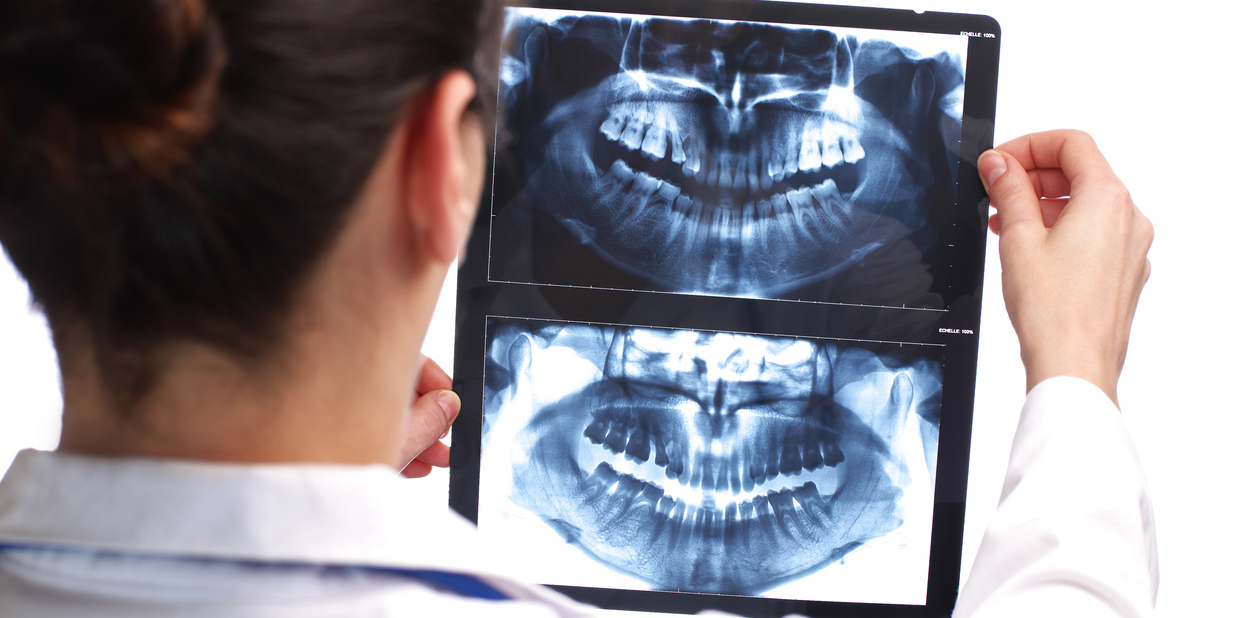How Safe are Dental X-Rays?
More than ever, people are conscious of potential dangers they expose their bodies to. Radiation is one of the biggest concerns and people often question how much radiation is delivered during dental X-rays.
X-Rays and computed tomography (CT) scans work by ionising radiation or high energy wavelengths penetrating the body to reveal organs, tissue and bones. All living species are exposed to some level of naturally occurring ionising radiation daily.
Amount of Radiation Delivered
The biological effects of radiation on the body are described by an International System of Units (SI) measurement called a Millisievert (mSv). The measurement allows us to determine the level of radiation exposure from natural and artificial sources and any potential health effects.
Dental X-rays need very little radiation. According to the Centers for Disease Control and Prevention (CDC), dental X-rays (bitewing and full mouth survey) deliver a dose of radiation that is 0.005 mSv.
The dose of radiation you receive during a dental X-ray is far less than what you receive during a six hour flight at 0.035 mSv. A typical chest x-ray delivers 0.1 mSv while a CT scan is 10 mSv.
Naturally Occurring Radiation
What many people don’t realise is they’re exposed to radiation during everyday life. Radiation comes from the sun, Earth, our diet and natural chemicals in our bodies and it’s impossible to avoid.
The average natural background radiation we’re exposed to in Australia is 1.5 mSv per year, the same amount of radiation delivered by 75 chest X-rays. We can make a direct comparison of exposure between artificial and natural sources of ionising radiation because one source is no more damaging than the other.
Risks of Too Much Radiation
The amount of radiation most people receive for medical or any other purpose shouldn’t be cause for concern.
The CDC believes you would need a 500 mSv dose to cause damage to blood cells. We need a 1000 mSv dose to increase the risk of fatal cancer from 22% (the average risk of getting cancer in the US) to 27%.
It takes huge doses of radiation to cause skin burns or radiation sickness. To suffer from radiation sickness, a person would need 18,000 chest X-rays delivered all over the body over a short time. Radiation sickness can only occur in an extreme event such as a nuclear explosion.
Benefits of Dental X-Rays
Therefore, the benefits of dental X-rays far outweigh the risks. A dentist or specialist dentist such as a prosthodontist use dental X-rays to see what’s happening below the gum line and in areas they can’t see to check for signs of:
- Teeth roots touching/rubbing against each other
- Impacted teeth
- Size and place of any wisdom teeth
- Abscess or tumours
- Tooth decay behind old fillings and crowns
- Loss of bone holding teeth in place
- Problems with jaw bone
Dentists keep X-rays on file to view in future to monitor changes with teeth, gums and the jaw. Dentists and specialists use X-rays as a reference for preparing braces, tooth implants and dentures.
When Should You Avoid a Dental X-Ray?
Dental X-rays are safe for the vast majority of the population however there are some people who shouldn’t have an X-ray.
During Pregnancy
Foetuses and young children are more sensitive to radiation exposure because their cells are dividing rapidly and there is a greater chance that radiation may disrupt the process and cause cell damage.
For this reason, most pregnant women delay having X-rays until after the birth of their child, unless medically necessary. If an X-ray is required while pregnant, a lead apron may shield the abdomen from the X-ray beam. However, pregnant women shouldn’t neglect visiting the dentist as periodontal disease places them at a higher risk of adverse pregnancy outcomes.
Ultrasounds are safe because they use high-frequency sound waves, not radiation. It’s safe for breastfeeding mothers to have X-rays.
Accumulated Radiation in a Short Period
While dental X-rays deliver tiny doses of radiation, you may be concerned about your cumulative exposure through multiple CT scans or cancer treatment.
If you have had recent X-rays at your dentist, ask for a copy to be sent to your new dentist or specialist. They may be suitable and avoid the need for additional X-rays to be taken.
But if you have any concerns about your treatment, be sure to speak to your dentist or prosthodontist.
If you would like to see a prosthodontist, call to make an obligation free appointment on 9321 1632 or contact us online.

